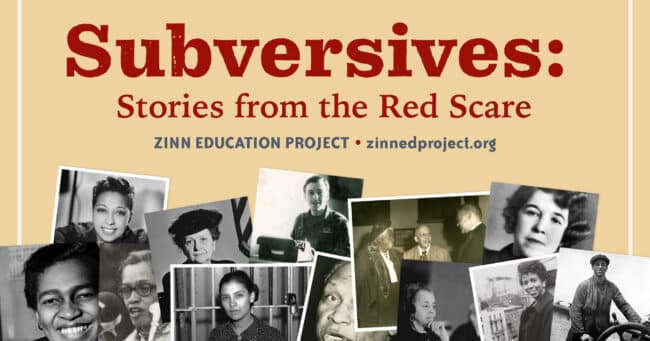
By Ursula Wolfe-Rocca
As a high school U.S. history teacher for 20 years, I struggled to find a good way of teaching the McCarthy Era. So most of the time — I am embarrassed to admit — I skipped it altogether. Instead, I tried to weave threads about anti-communist politics into my units on the Black Freedom Struggle, the Cold War, and nativism.
This mixer activity is a lesson I wish I had written earlier in my career. In it, students meet 27 different targets of government harassment and repression. Some of these individuals are communists (and Communists), some are not. Most are politically engaged in some form of organizing, but not all. They are men and women, immigrants and native-born, young and old, racially diverse, in government and outside it, affluent, middle class, and poor, Queer and straight. Students encounter Josephine Baker, the U.S.-born star of the Paris stage, Frank Kameny, a gay astronomer working for the U.S. military, Harry Bridges, a longshoreman and union activist organizing dockworkers on the West Coast, and many others.
These are the inspiring, poignant, and fascinating stories of McCarthyism that students are denied in the version found in most textbooks.
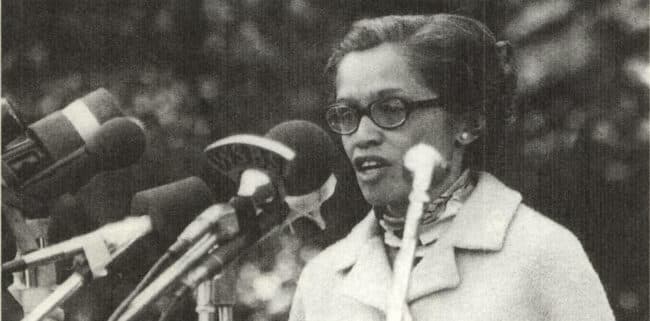
Throughout the 20th century, the government and powerful elites mobilized anti-communist politics to stamp out the efforts of some of the United States’ most dynamic activists and political organizations — like Emma Tenayuca, who led the pecan shellers strike; Hallie Flanagan, who headed the Federal Theatre Project; or Louise Thompson Patterson, one of the founders of Sojourners for Truth and Justice. Whenever organizers challenged the status quo — racism, sexism, capitalism, militarism, and colonialism — its defenders screamed “communism.”
Our students deserve to know that anti-communist repression has always been about a lot more than Russian spies, a blustering senator from Wisconsin, and a blacklist in Hollywood.
The Red Scare offered up in this lesson restores the powerful and inspiring stories of the wide range of activists and organizations who were its victims. One of the guiding tenets of the Zinn Education Project is that the transformational social change so desperately needed will never come from above, from presidents and CEOs. It will come from people like us, like our students — and like the many everyday people profiled in this lesson.
 Esther Cooper Jackson, Southern Negro Youth Congress
Esther Cooper Jackson, Southern Negro Youth Congress- Frank Kameny, The Mattachine Society of Washington
- Marcelle Henry, Voice of America
- Harry Bridges, International Longshoremen’s and Warehousemen’s Union (ILWU)
- Coleman Young, National Negro Labor Council
- Louis Jaffe, New York City Teachers Union
- Emma Tenayuca, Workers Alliance of America
- Albert Maltz, Hollywood Ten
- Claudia Jones, The Communist Party
- Bruce Scott, Department of Labor
- Jack O’Dell, National Maritime Union and Southern Christian Leadership Conference
- Madeleine Tress, Department of Commerce
- Lorraine Hansberry, Inter-American Peace Conference
- W. E. B. Du Bois, World Peace Council
- Alvah Bessie, Hollywood Ten
- Paul Robeson, Civil Rights Congress
- Louise Thompson Patterson, Sojourners for Truth and Justice
- Josephine Baker, Performer and former member of the French Resistance
- James Matles, United Electrical Workers Union
- Herbert Biberman, Hollywood Ten
- Frances Perkins, Department of Labor
- Sam Wallach, New York City Teachers Union
- Hallie Flanagan, Federal Theatre Project
- Elizabeth Catlett, Taller de Gráfica Popular
- William Worthy, Baltimore Afro-American newspaper
- Charlotta Bass, Sojourners for Truth and Justice
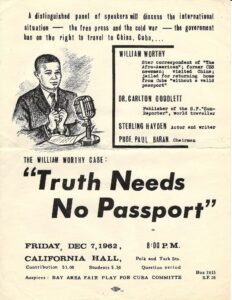 This lesson also seeks to clarify how powerful interests seek to discredit anyone who tries to challenge their power. Whereas “communist” became shorthand for any undesirable person or belief in the eyes of the elites, so today “voter fraud” is used by Republicans to disenfranchise “undesirable” voters who threaten to upset their traditional seats of power, and Critical Race Theory acts as a sweeping indictment of white supremacy’s critics. This lesson aims to help students become alert to the way shiny new terminology can advance very old forms of oppression.
This lesson also seeks to clarify how powerful interests seek to discredit anyone who tries to challenge their power. Whereas “communist” became shorthand for any undesirable person or belief in the eyes of the elites, so today “voter fraud” is used by Republicans to disenfranchise “undesirable” voters who threaten to upset their traditional seats of power, and Critical Race Theory acts as a sweeping indictment of white supremacy’s critics. This lesson aims to help students become alert to the way shiny new terminology can advance very old forms of oppression.
The Red Scare was a scorched-earth policy against the country’s most progressive forces. But their legacies live and grow. Today, activists who call for abolition of prisons and police, or a complete moratorium on fossil fuel extraction, or a jobs guarantee for every American, are often dismissed as impractical, imprudent, utopian, and yes, sometimes they’re red-baited as well. But our students deserve to know there have always been savvy dreamers, clear-eyed critics of the status quo, who believe — and act like — a better world is possible.
Classroom Stories
I gave the Subversives: Stories from the Red Scare mixer a shot and, in short, I love it! It is an excellent lesson. It is simple to execute yet there is plenty of complexity, which I think is the ideal combination for a lesson. I will definitely use it again next year.
The lesson helped my students understand more of the nuances of Communism and how people were demonized for any affiliation with the Communist Party, either real or suspected. A lot of students who struggle to engage with reading tasks were engaged and excited about this mixer. There were a lot of rich conversations about the government and its role throughout history, and students made connections between their lives and the lives of historical figures.
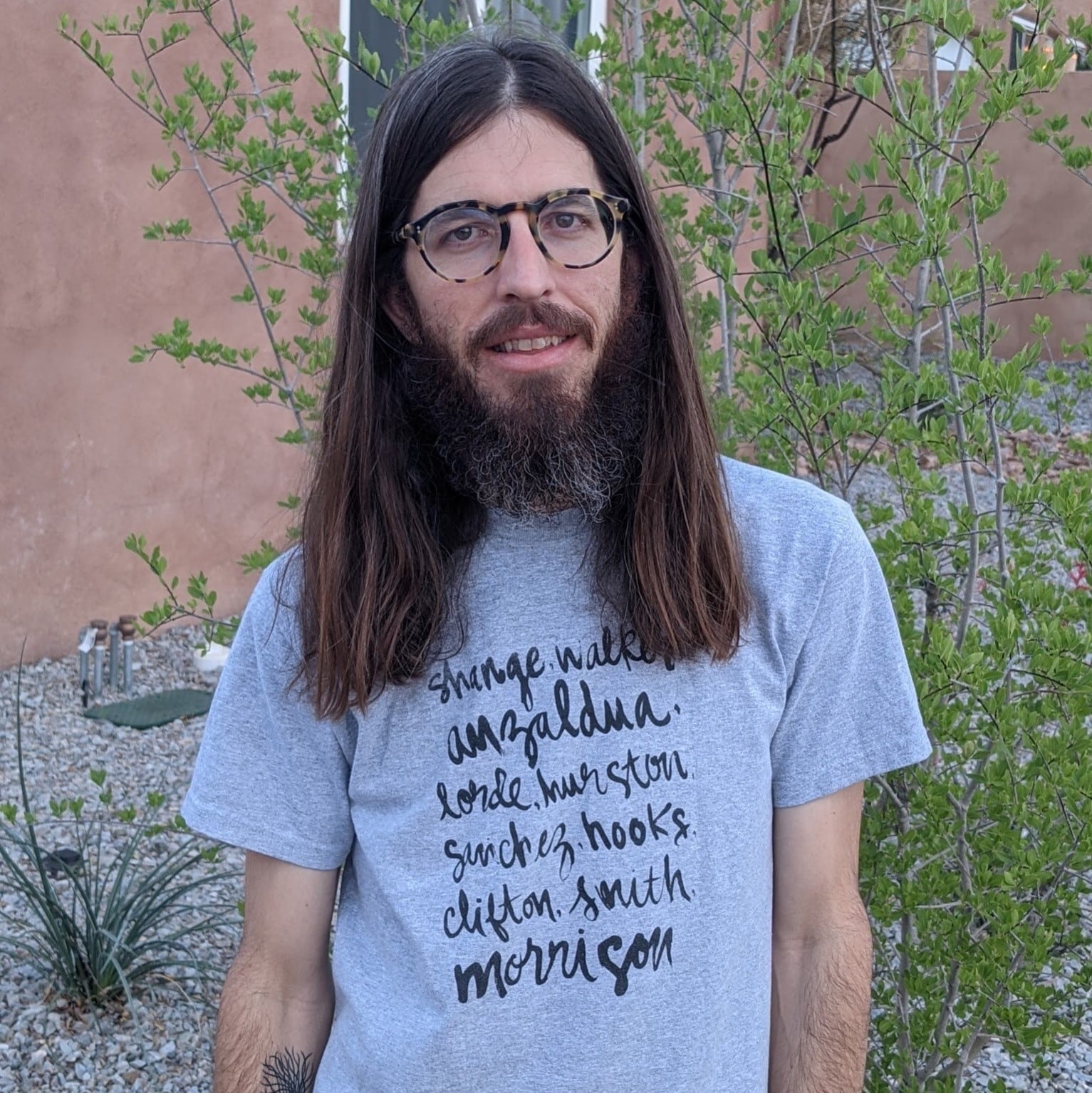
Over the course of my 11th grade classes’ reading of The Grapes of Wrath, I used a wide variety of excellent Zinn Education Project resources to connect the novel to the realities of the past and our present day, touching on the climate change, labor, farming, the New Deal, and the Green New Deal.
As we approached the end of the novel, words like “red” and “agitator” became more prevalent; the migrants became more radicalized in mind if not yet in deed; and the violence of the state was directed at those championing fairness and dignity. I wanted an activity that would help contextualize the words and actions of the novel and immerse the students in the real life history of the Red Scare and those who bravely stood up to McCarthyism.
Subversives: Stories from the Red Scare by Ursula Wolfe-Rocca, once again from Zinn Education Project, was an excellent mixer lesson that did just what I needed.
What I love about Zinn Ed Project’s teaching resources are that they are expertly researched and detailed, and they show both the indignities real people suffered, while still centering the way these same people fought back. In this way, students learn the shocking truths of our history, while still seeing where the spaces for action and revolt can exist in our present moment. They can see how they themselves can act in the face of injustice.
Before beginning the mixer activity (which includes excellent, detailed instructions to ensure it goes off without a hitch), I asked my students to write about what they knew, or think they knew about topics related to the Red Scare, putting some specific words like “red,” “commie,” “Senator Joseph McCarthy,” and more on the board to prompt their writing and thinking. This provoked a fairly long conversation in my classes about the history behind the Red Scare and the Cold War, allowing students an opportunity to show what they know, and to ensure students had a firm background on the history before we began. We then proceeded to mix with one another, sharing our stories, and recording what we learned about those affected by McCarthyism and the Red Scare.
I always like to play a role myself, as it models the seriousness of the roles and speeds buy-in from even skeptical students. After we mixed and answered all the questions, students answered the further questions in the lesson individually in their journals, and we discussed as a class.
Students were absolutely shocked by the many and various ways people from all jobs and walks of life were hounded and persecuted by their own government. Perhaps most importantly, students were able to see that these persecutions, while carried out under the guise of national security and the American way of life, were nothing more than thinly veiled attacks on those who would dare to challenge the white, heteronormative, capitalist hegemony of the United States. They were also amazed by the stories of resilience and strength of those they mixed with.
I closed the activity with reflective writing on the final question on the mixer sheet asking students to draw conclusions about who was targeted by the Red Scare and why, as well as my own question on connecting the activity to The Grapes of Wrath, and a question from the next steps section of the activity asking students to identify what terms (similar to “red” or “commie”) today are used to isolate, criminalize, and target current social movements?
As usual, this activity from the Zinn Ed Project was an energetic success that elicited excellent connections to the novel and our present day. I’ve included some sample responses from my students below:
The people who were targeted all wanted fair and equal rights or knowledge. They targeted people and called them Communists for wanting things like flushing toilets and equal pay among Black communities. They targeted gays and people who fought against their injustices. I think a lot of what Tom and Casy experienced was similar to the red scare characters in our mixer. Like wanting fair pay they could support a family with. Casy was killed for fighting for what he beloved in. Killed for fighting for a good life and the ability to live financially free. They were seen as Okies and things just like the people were seen as commies. Even though most of them just wanted basic rights and liberty. I think a lot of people can agree derogatory terms are always going to be around. today people see words like trannie to describe and discriminate against the trans community. During the BLM movement trump would call the African American protesters thugs, even when they had peaceful protests. But he called white RIOTERS who broke into the capitol building were simply “rightfully anger American civilians. ” I believe Trump used thugs to discriminate against African Americans simply fighting for the end of Black and colored police brutality.
People who fought for equal rights, African Americans, and people [who are] part of the LGBT community were targeted during the Red Scare because they had differing ideas from white America.
Stories in the mixer are related to the stories of those in the novel because it seems as though people who have more power are scared of people who are different from them. Some terms that are used to isolate, criminalize, or target people, groups, or movements include “Social Justice Warrior”, “snowflake”, and racial/homophobic slurs.
People targeted for being a communist during the red scare are mostly people fighting for equality. People like homosexuals, union members, and people with communist ideals were targeted as they could most likely be communists. Tom and Casy are trying to get a job so that they can get their footing in California. These people’s stories could relate to Tom and Casy as they want to be paid as equally as anyone else. Their fight for equality in pay is similar to these stories of other equality fighters
Many minorities seemed to be targeted during the Red Scare, and they were targeted simply because they didn’t fit in with the norms of the time. The stories we heard in the mixer are related to the stories of those in the novel because these were people of lower class who wanted more from the upper class. In short the power of the elites were threatened and the book utilizes terms about communism with a bad connotation. The elites seemed to use that term to villainize the migrants such as Tom and Casy, who led a strike as a leader and was killed as a result. Some terms that are used today to isolate or target people groups. Maybe one of the most prominent in today’s context would be using Covid-19 to target Asian groups. The term is used interchangeably, in particular, with the Chinese. There is a negative connotation associated with the virus and the place of origin.
Thanks again Zinn Education Project for another successful, high impact lesson!
I used the Subversives: Stories from the Red Scare lesson in my 11th grade U.S. history class. It was the first time I was teaching the Red Scare and the first time I was using resources from the Zinn Education Project. In other words, we were all holding on for dear life, just trying to get through.
It went well, in large part due to the detailed instructions. Read: Don’t skip any parts of the preparation if you can!
The students reported really enjoying walking around and having a chance to talk with one another in one-on-one structured conversations. I observed students conversing who don’t typically talk. Students also reported enjoying learning about different narratives that they wouldn’t have found in mainstream Red Scare coverage.
More Classroom Stories

I am inspired by the Zinn Education Project content that provides perspectives and narratives from marginalized historical actors and communities who are often excluded from traditional social studies curriculum. If students have equitable access to such content, they will better develop critical thinking skills as they investigate and discover historical truths left out of their textbook, and they then begin to understand how these historical accounts and events have shaped both contemporary society and their own communities. The material from the Zinn Education Project provides thought-provoking and engaging activities for students from all backgrounds to participate and collaborate so that they can learn material what may be culturally relevant to them and ultimately learn material that contributes to creating a community of learners.
The lesson Subversives: Stories from the Red Scare was used to make a sample Cold War lesson plan for my teaching credential program. I was tasked with creating a lesson on McCarthyism, but when I looked over the sample textbook provided, information on the accused of McCarthyism was limited to only suspected spies and the Hollywood 10. Nowhere in the text were there any mention of who exactly were targeted during the Red Scare, and the focus was mainly on Joseph McCarthy. Having learned from other courses how Cold War policies and events intertwined with the Civil Rights Movement, I looked for other resources that could provide different perspectives. I looked up the Zinn Education Project and what I encountered were not only lessons to help with my sample lesson plan, but historical accounts that were never mentioned at all in the sample textbook. The victims of the Red Scare were often activists and union members, many of whom were people of color, who were fighting for social change and racial justice, yet the government accused them of being “Communists” or “traitors.” This convinced me to use some of the material to create a lesson plan that could utilize the experiences of those who were wrongly accused.
For the actual lesson plan, which was presented to other students in the credential program course, I started with them examining the “How Red is the Little School House” poster from the lesson material. The class observed the poster and then wrote down what they knew about the poster using prior knowledge before having a brief class discussion. Our discussion was very interactive as the class found prior connections about how society perceived certain curriculum and courses in schools and universities, especially classes that promoted critical race theories or ethnic studies as “un-American” or “communism.” I shared how such sentiment could be traced to the McCarthy trials. I then presented background knowledge on the origins of the Red Scare, and afterwards I had students read over Paul Robeson’s testimony to HUAC as his words provided a segway into the activity. Robeson’s words provided an early example of how African Americans activists and workers were targeted by the government for fighting for social changes and workers’ rights. During a brief discussion of the reading, the class picked up on the continuation of government policies and events suppressing any form of social change for communities of color.
With this continuity in mind, we started the lesson. Students had the essential question of determining who were the true victims of McCarthyism. I printed out the mixer roles and had each student choose one role randomly. They were tasked with finding at least four other individuals and introducing themselves as if they were the historical actors themselves. They read their role to each other and filled in a graphic organizer that I created to scaffold their analysis of the conversation. What I enjoyed from this exercise was the level of engagement and interaction among the students since, rather than having them sitting down and reading different roles, they had to walk around and act in character to present their roles to other students. An emphasis on academic conversations promotes critical thinking skills as students had to make connections between their characters to determine patterns of who the actual victims of the Red Scare were.
The class then convened to discuss their findings. Our class discussion revealed more than just answers to the essential questions in which many in the class identified activists, union members, and others involved in the struggle for Black liberation or for workers and women rights. Many cited how so many victims advocated for social changes and reforms for their communities while remaining loyal to the United States.
One example was Emma Tenayuca, who was blacklisted for protesting to have fair wages and safe working conditions for the women workers at the Finck Cigar Company while also having the desire to fight against fascism during World War II. A few students felt connected to her story as they had mothers who once worked in industries that had not paid much, but if their mothers spoke up they would be criticized and fired.
The class also made connections to their historical actors based on personal experiences. One student worked for the school newspaper and took a great interest in William Worthy’s story on how he wrote articles with anti-colonial and anti-imperialist themes, but much like how Worthy was arrested for writing such articles, the student emphasized how his own articles had been criticized and censored by the publisher for presenting similar themes. But, if the student spoke up he would be terminated from the university newspaper office. One student brought up both Madeline Tess and Bruce Scott in regards to how the government targeted them for their sexuality, which reminded the student of past high school policies that targeted them for not conforming to the social norms of that school.
To conclude the lesson I had the class do a reflection in their digital journals. We then had one final discussion on the activity, with many concluding that the Red Scare was another moment in U.S. history where government forces targeted people of color and activists who fought for racial and social justice. According to one student, the hysteria of the Red Scare still continues today as he brought up how government officials and policymakers continue to suppress any form of activism, or academics that promote equitable access and rights for all marginalized communities. At the same time, others commented on how the activity “restored” the voices of these activists and organization members.
Subversives: Stories from the Red Scare is an excellent lesson that should be mandatory as it presents new narratives of Cold War events not often taught in class. Students discover how progressive actions and activism were mislabeled as “communism” or “threats” because the government not only needed a reason to justify their policies, but wanted to prevent any social change that could benefit marginalized communities. This lesson also presents this historical truth in an engaging manner for students to interact with one another so that they develop critical thinking skills that uncover the truth of the Red Scare, all while developing historical empathy for the plight of progressive actions and individuals advocating for change. Ultimately, students make those connections to suppression in modern day protests, and I hope that the class — as well as my future students — understand that the legacies of these individuals still lives on with said protesting despite the crackdowns from government forces.
Related Resources
For further information on this era and the repression that organizers faced, we recommend the book Red Scare: Blacklists, McCarthyism, and the Making of Modern America by Clay Risen (Scribner).



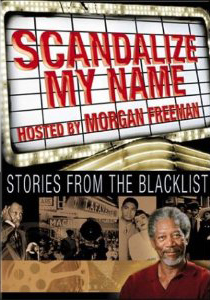


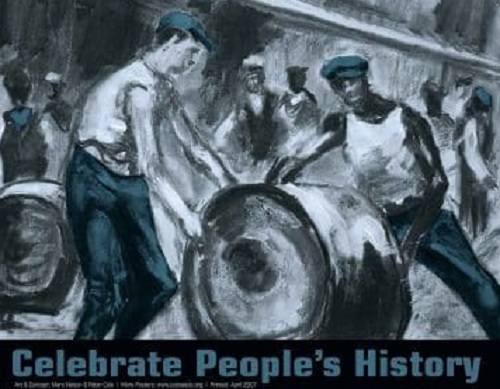
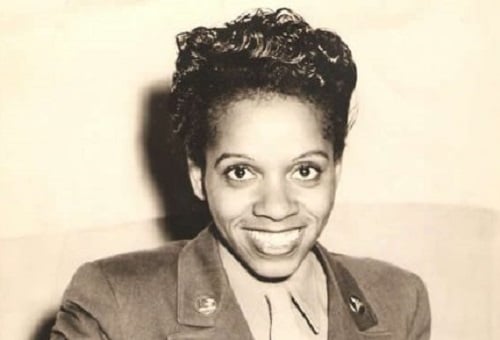
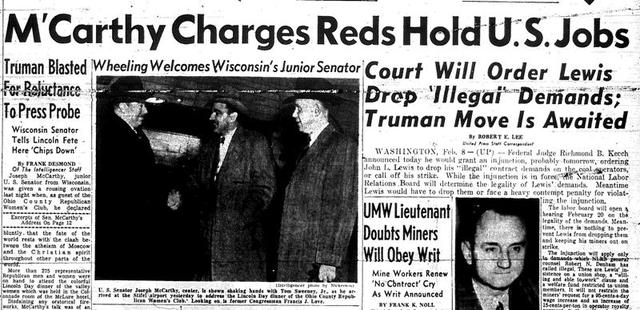

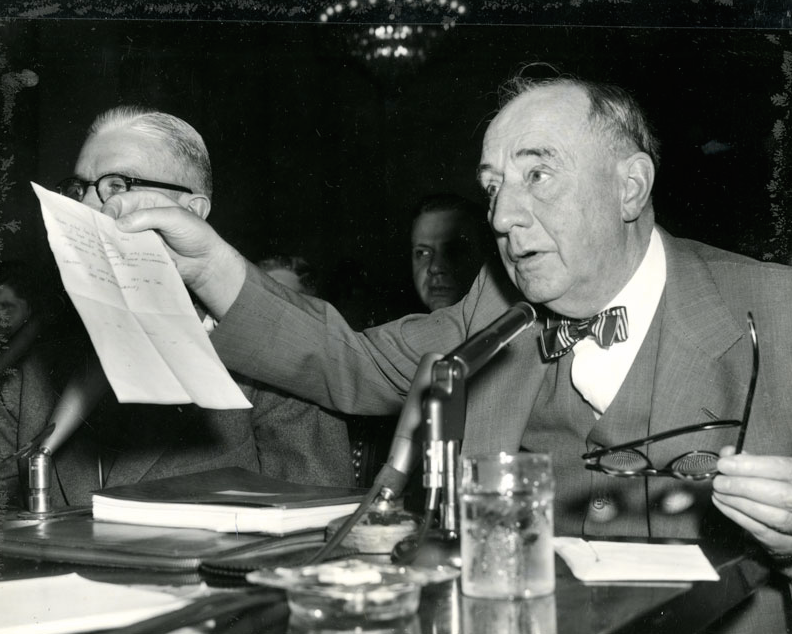
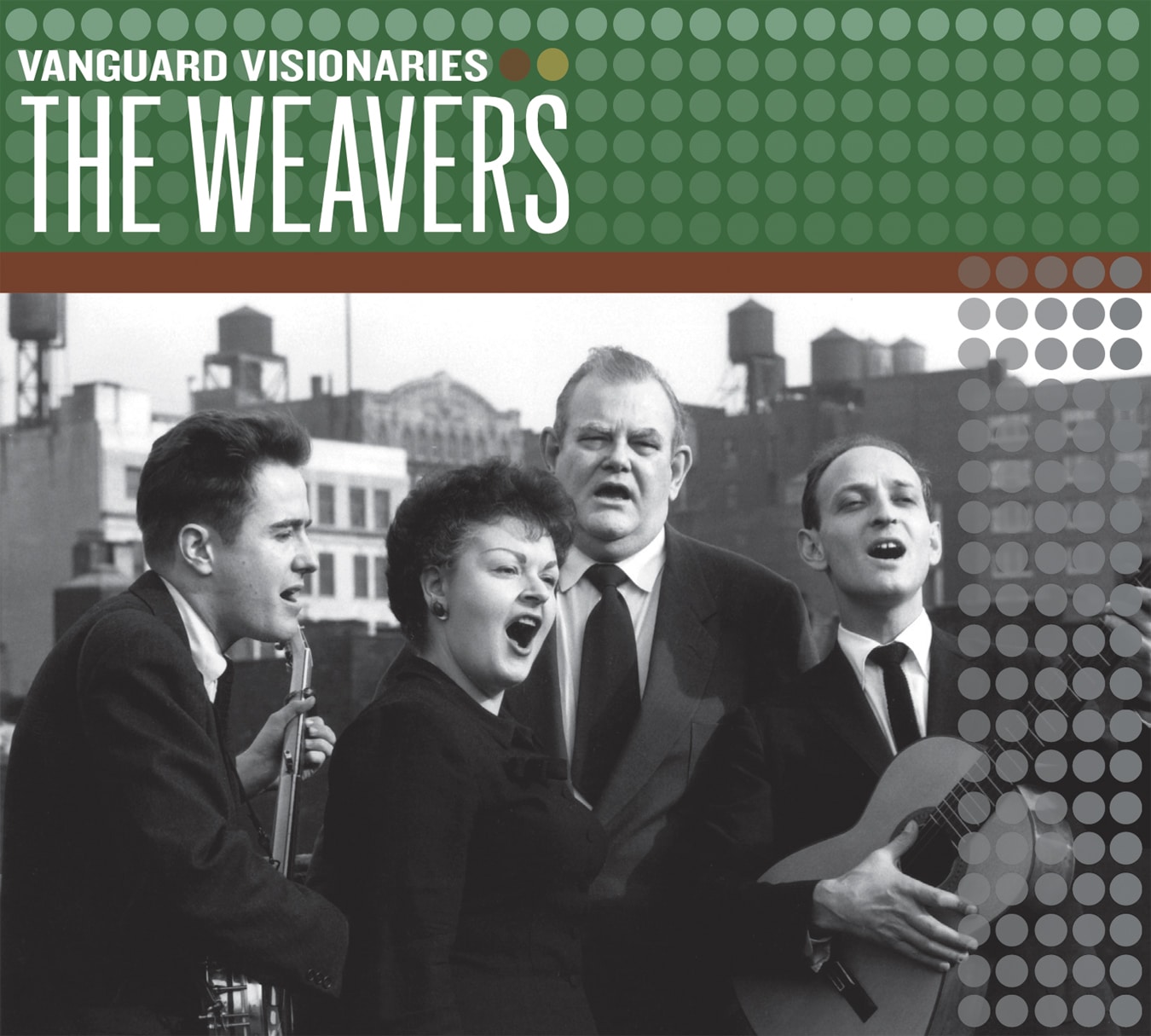






Twitter
Google plus
LinkedIn